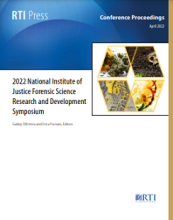Accuracy of forensic pathologists in incorporating post-mortem CT (PMCT) in forensic death investigation
Journal
Journal of Forensic Sciences
Date Published
September 2022
Agencies
NIJ-Sponsored
Publication Type
Research (Applied/Empirical)





